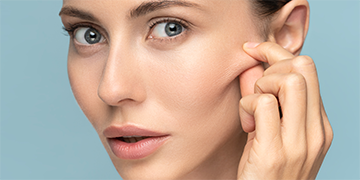The Power of Injectables: What You Need to Know About Fillers and Botox
Injectables have become a cornerstone in the realm of aesthetic treatments, providing individuals with non-surgical options to enhance their appearance and restore youthful vitality. Two of the most popular injectables are dermal fillers and Botox, each offering unique benefits and results tailored to specific concerns. Understanding the power of these injectables is essential for anyone considering cosmetic enhancements.
Botox, derived from botulinum toxin, is primarily used to reduce the appearance of dynamic wrinkles—those caused by facial expressions, such as frown lines, crow’s feet, and forehead lines. By temporarily blocking nerve signals to the targeted muscles, Botox smooths out these wrinkles, resulting in a more relaxed and youthful appearance. The treatment is quick, often referred to as a “lunchtime procedure,” with results visible within a few days and lasting for three to six months. Botox is not only effective for cosmetic purposes; it also has medical applications, including treating migraines, excessive sweating, and muscle spasms.
On the other hand, dermal fillers are used to restore volume and plumpness to areas that have lost elasticity and firmness due to aging or lifestyle factors. Fillers are made from various substances, with hyaluronic acid being the most common. They can enhance areas such as the cheeks, lips, and under-eye hollows, as well as soften deep lines and wrinkles. The results are instant, providing immediate volume and smoothness, and can last from several months to over a year, depending on the type of filler used.
Both treatments are minimally invasive, requiring little to no downtime, making them appealing for individuals seeking quick enhancements without the commitment of surgery. However, it’s crucial to consult with a qualified healthcare provider to discuss goals, expectations, and any potential risks or side effects.
Understanding the distinction between fillers and Botox is vital for achieving desired results. While Botox is ideal for smoothing dynamic wrinkles, fillers are best for adding volume and contouring the face. Many people opt for a combination of both treatments to achieve a balanced and natural-looking outcome.
In conclusion, the power of injectables lies in their ability to provide effective and immediate results with minimal recovery time. Whether you’re looking to smooth out wrinkles or restore lost volume, understanding how Botox and fillers work can help you make informed decisions about your aesthetic goals. Always consult a licensed practitioner to ensure a safe and satisfying experience, and embrace the confidence that comes with a refreshed appearance.


